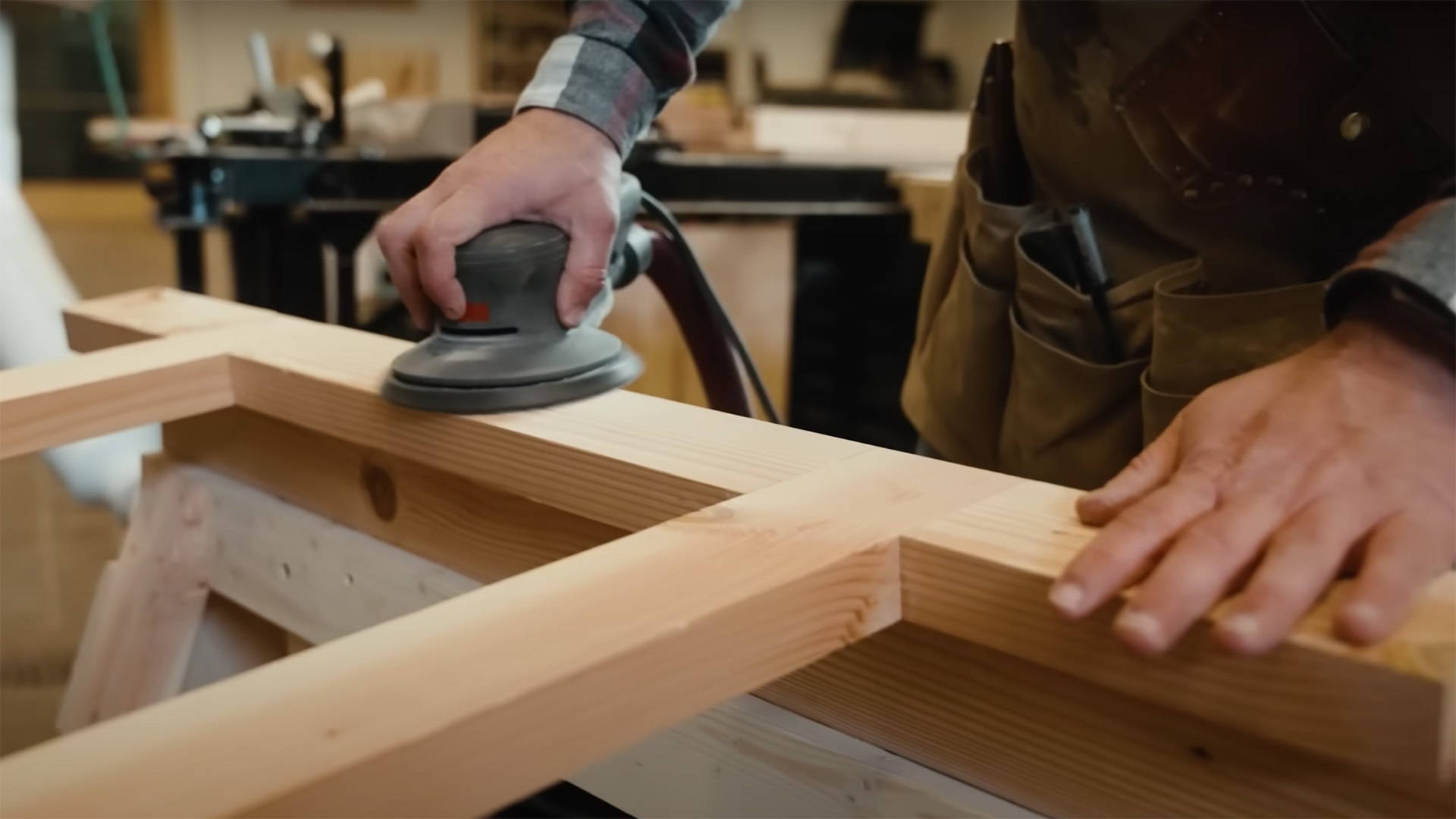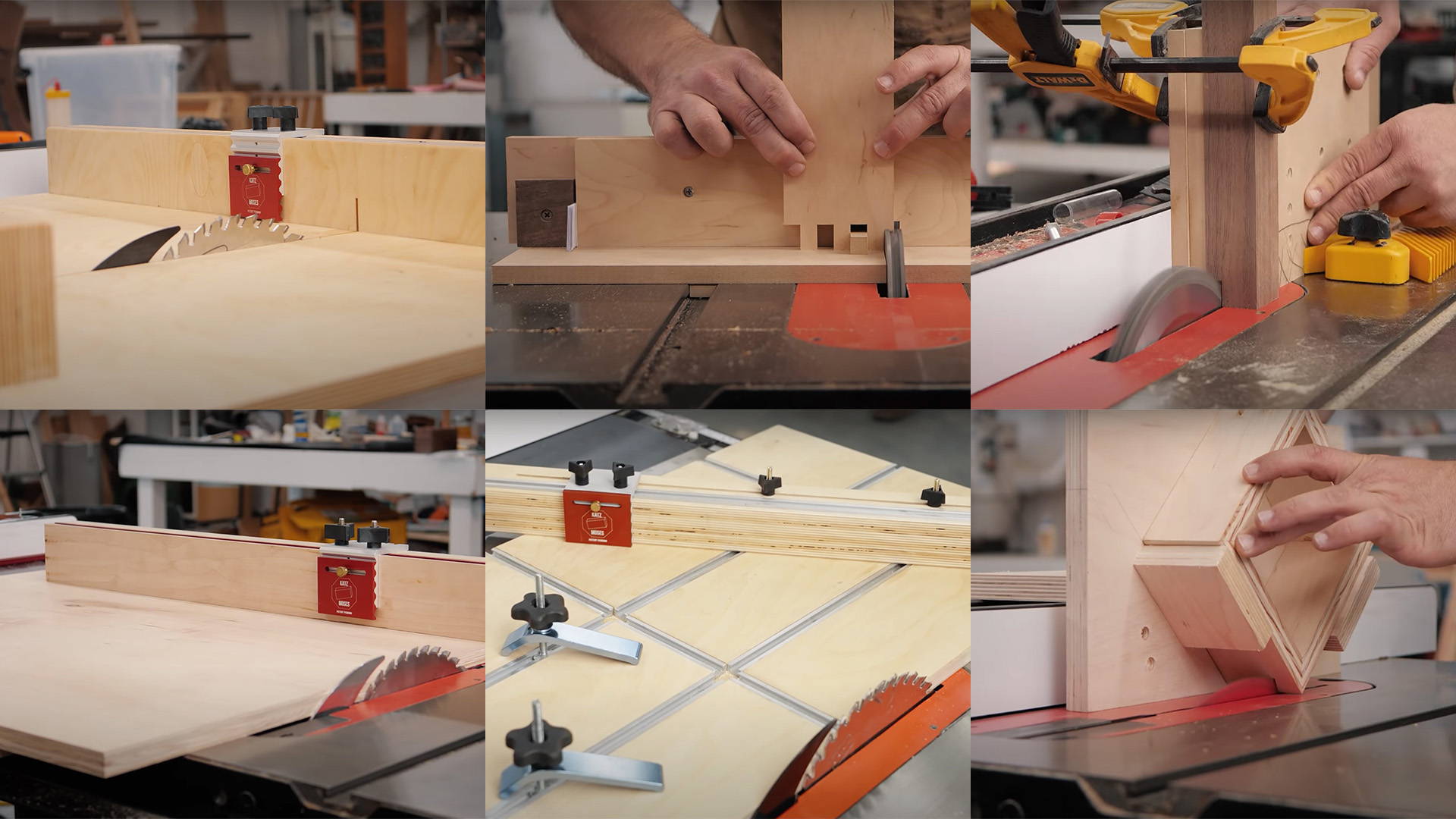Everyone knows calipers have jaws for outside and inside measurements. Most people know the little bar at the bottom is a depth gauge.
But a lot of people don’t know there’s a fourth way to measure with calipers — and it’s the best way to set up your marking gauge or square.
Say you’re cutting a half lap and need to mark exactly halfway through the thickness of a board.
First, use the calipers to measure the thickness of the board. Make sure to measure where the half lap will actually be.
Divide that measurement by half and set the calipers to that number. Lock it down tight.
Now to transfer that measurement to your marking gauge or square…
Place the fence of your marking gauge or square on the TOP of the calipers. Then adjust it so the edge of the blade rests on the little shelf below, on the back of the calipers.
This setting will exactly match the reading on your calipers.
It’s a whole lot easier to balance your tool’s fence on the bigger surface at the top of the calipers than the spindly depth rod at the bottom — and the measurement is exactly the same.
Marking gauges with a micro-adjust feature make precision even easier. That’s what I always use — and also what we carry in our store.
If you want to improve the accuracy of your layout, you gotta add one of these to your toolbox.
Any other caliper tips? Let us know in the comments below!
Follow us on Instagram @katzmosestools, on TikTok @katzmoseswoodworking, and check out my YouTube channel for more great woodworking content...
And as always, STAY SAFE IN THE SHOP!











8 comments
John McBratney
A neat idea, I have not used it before. My way of accurately finding board centre is make a careful estimate with your marking gauge and mark a small length on the board to be cut. Move the gauge to the other side and make another make parallel to the first one. If you are so=pot on the two marks will be right on top of one another and you have the exact centre. If there is a small gap the middle is the two lines is the exact centre. Works every time with no measurement! Ideal for centreing the cut when slicing planks edge wise of a band saw.
A neat idea, I have not used it before. My way of accurately finding board centre is make a careful estimate with your marking gauge and mark a small length on the board to be cut. Move the gauge to the other side and make another make parallel to the first one. If you are so=pot on the two marks will be right on top of one another and you have the exact centre. If there is a small gap the middle is the two lines is the exact centre. Works every time with no measurement! Ideal for centreing the cut when slicing planks edge wise of a band saw.
Mark Ugoretz
This “trick” works best and is more precise – important for half-laps et al – if you use metric as opposed to imperial measurements. I’m slowly moving more and more toward metric measuring since dividing fractions is a PIA. It’s not only more precise it’s usually faster.
“Busted Knuckles Woodshop” has a series of videos of why the US is virtually alone in the world in officially using imperial measures. The truth is we aren’’t actually limited to imperial since most critical industries, science, and cooks use metric. It’s the rest of us who are behind the curve.
This “trick” works best and is more precise – important for half-laps et al – if you use metric as opposed to imperial measurements. I’m slowly moving more and more toward metric measuring since dividing fractions is a PIA. It’s not only more precise it’s usually faster.
“Busted Knuckles Woodshop” has a series of videos of why the US is virtually alone in the world in officially using imperial measures. The truth is we aren’’t actually limited to imperial since most critical industries, science, and cooks use metric. It’s the rest of us who are behind the curve.
Ken Roth
I’ve been using calipers for years and never knew about the (secret) 4th use of calipers—it really took me by surprise! Thank you Jonathan!
I’ve been using calipers for years and never knew about the (secret) 4th use of calipers—it really took me by surprise! Thank you Jonathan!
Don Tardiff
Using that feature of your calipers is often a better way to check height measurements rather than using the depth gauge (thin rod or extension on the right end of your calipers) for example checking the height of your router bit or table saw blade. The depth rod by its size is better used as a way to measure the depth of a drilled hole or counterbore.
Using that feature of your calipers is often a better way to check height measurements rather than using the depth gauge (thin rod or extension on the right end of your calipers) for example checking the height of your router bit or table saw blade. The depth rod by its size is better used as a way to measure the depth of a drilled hole or counterbore.
Steve LeLaurin
At the risk of sounding picky, the math geek in me is compelled to point out a common mistake. You say “Divide that measurement by half and set the calipers to that number.” What you really mean is “Divide that measurement by TWO …” If you “divide by half” you are actually multiplying by 2!
At the risk of sounding picky, the math geek in me is compelled to point out a common mistake. You say “Divide that measurement by half and set the calipers to that number.” What you really mean is “Divide that measurement by TWO …” If you “divide by half” you are actually multiplying by 2!
KG
For a specific/arbitrary measure, that’s an excellent method. Thank you for sharing.
For scribing 1/2 a given thickness, I find it’s way faster and less error prone to set the gauge to a best eyeball guess, lightly press it/mark from one edge, then repeat the light mark with the gauge referencing the opposite edge. Micro adjust the gauge to split your 2 feint marks and 9/10 times you’re done and another mark+compare from the opposite side confirms it when the cutter drops into the previous mark.
Takes about 100 times longer to write it than do it.
For a specific/arbitrary measure, that’s an excellent method. Thank you for sharing.
For scribing 1/2 a given thickness, I find it’s way faster and less error prone to set the gauge to a best eyeball guess, lightly press it/mark from one edge, then repeat the light mark with the gauge referencing the opposite edge. Micro adjust the gauge to split your 2 feint marks and 9/10 times you’re done and another mark+compare from the opposite side confirms it when the cutter drops into the previous mark.
Takes about 100 times longer to write it than do it.
James Meier
Because it just takes you to the store page where it shows you price and allows you to add to your cart.
Because it just takes you to the store page where it shows you price and allows you to add to your cart.
Robert Mackin
Why, on earth, would anyone click buy now before a cost is shown?
Why, on earth, would anyone click buy now before a cost is shown?